Tim Mosso visits the Amelia Island Concours d’Elegance: Classic Supercars and Vintage Cars in Abundance
by Tim Mosso
The Amelia Island concours d’elegance – “The Amelia” – has been held annually in the Florida region of the same name since 1996. Local climate offers an agreeable escape from northern weather during the late days of winter, and it’s for precisely this reason that America’s finest classic cars and their admirers make the trip each year.
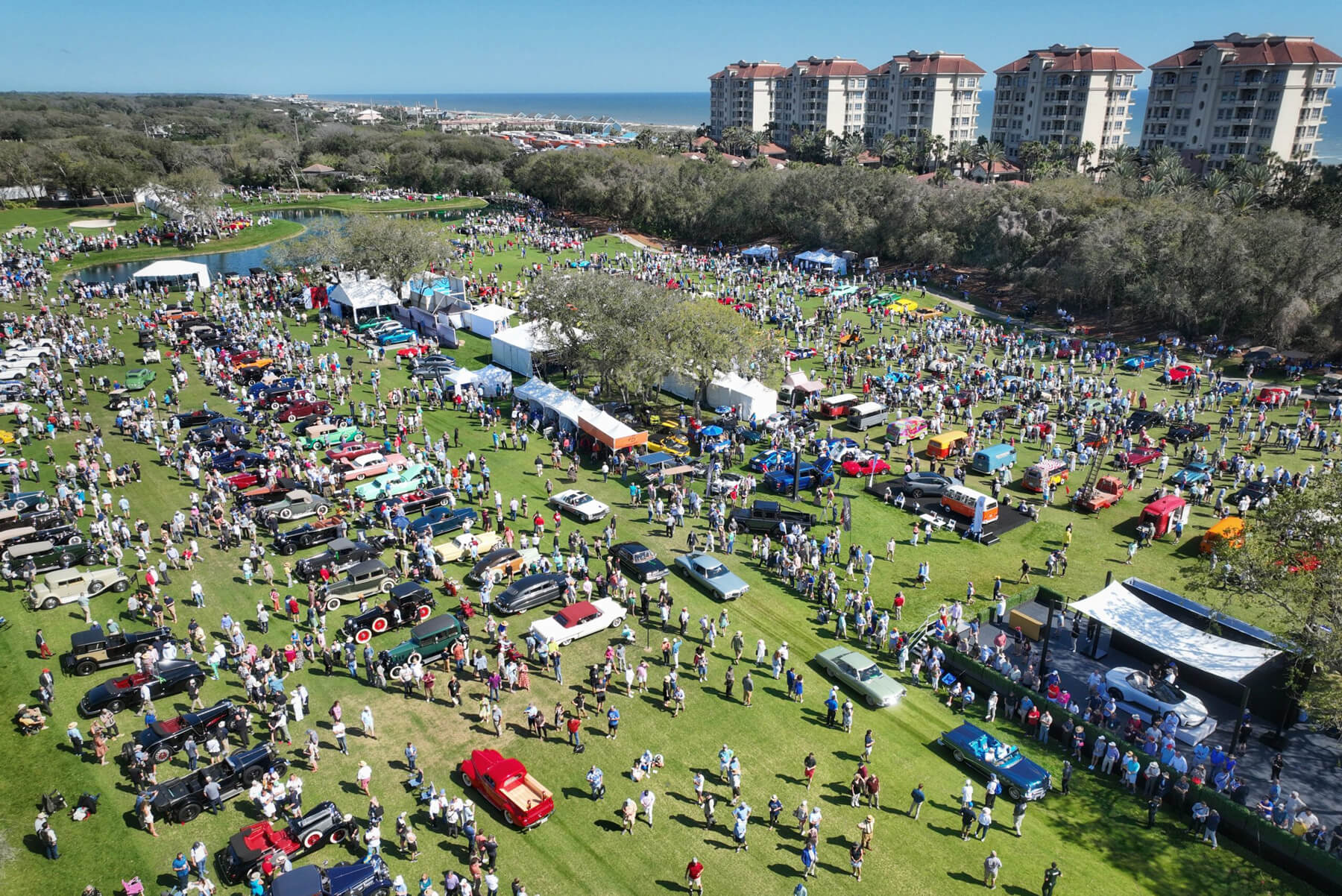
The Amelia 2023 (photo courtesy newsroom.hagerty.com)
The diversity and quality of the classic metal on display demands both respect and reflection; this is a rare pleasure. 2022 was my first year of attendance, and I was fortunate to document the hardware on exhibition. This gallery is the first of two highlighting my experience.
Day one of the event included a showcase of vintage and late model supercars. Lamborghini’s Countach, the definitive bedroom wall poster car of a generation, was represented by this exquisite green Euro-bumper Countach 400S.
Built after the initial “periscopio” LP400, the 400S added the first of the gingerbread that would become – for better or worse – a signature of the car during the 1980s. Enormous air boxes over the quarter-panels hint at the voracious appetite of the V12 engine beneath the rear deck.

Lamborghini Countach
Lamborghini’s shingle-like shape, penned by Marcello Gandini, remains crisp despite the fender flairs, massive air dam, and Boeing-grade wing. Fascinating details abound. First, there’s the enormous articulated mono-wiper to sweep the windshield. Surface interest includes sharply geometric elements such as the trapezoidal front hood and sharply angular glass planes.
False headlights in fact house the turn signals while the actual beams hide under retractable covers. NACA ducts on each flank – one of the few concessions to practicality that actually improved the appearance – add aerospace excitement to a body already pulsating with energy.
Lamborghini’s original “raging bull” emblem appears both cruder and leaner than its current iteration, and that’s part of this vintage supercar’s appeal.
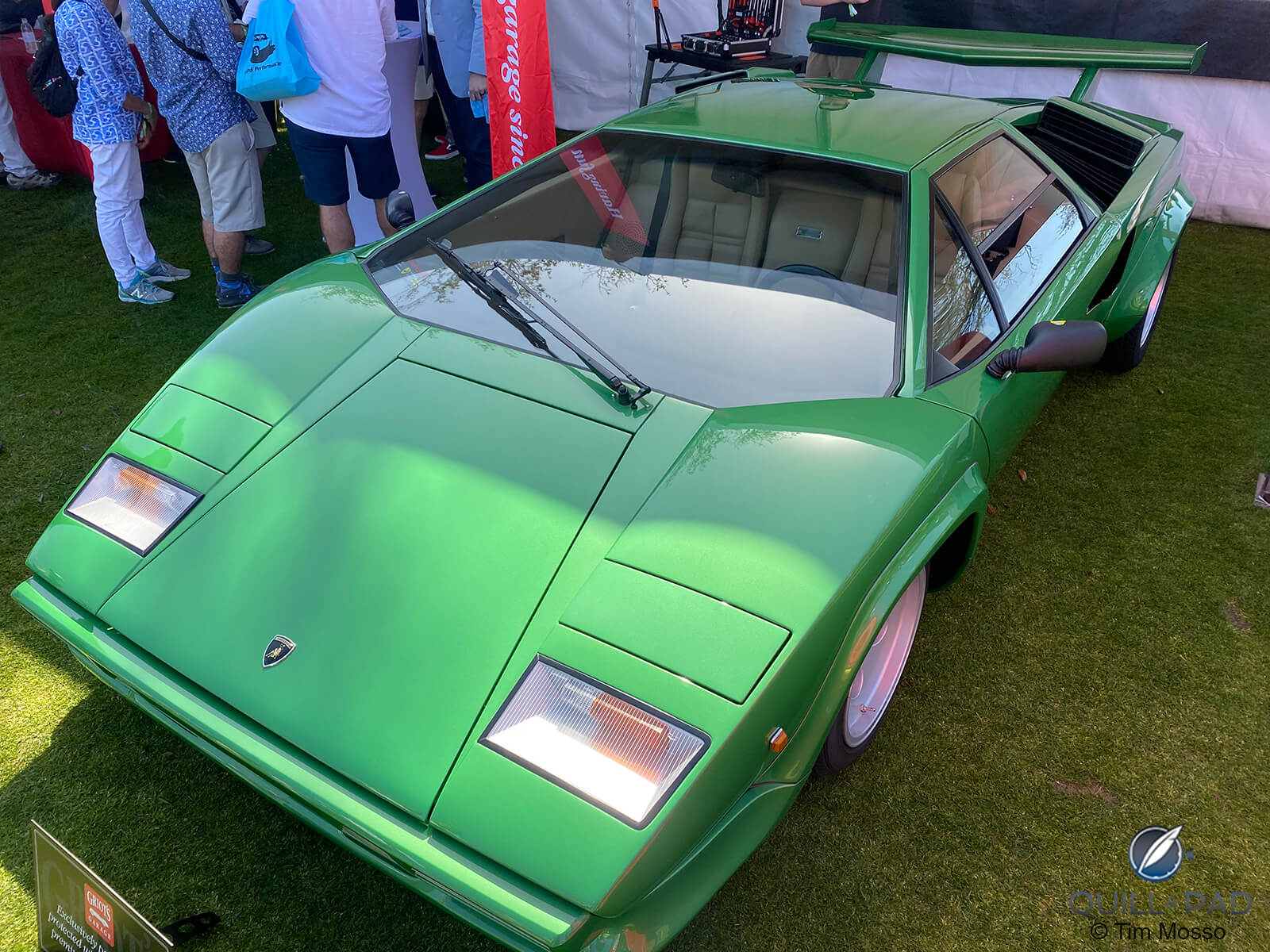
Lamborghini Countach
Not far from the 400S, Lamborghini’s final Countach, the 25th Anniversary, reflected the final evolution of a model that saw more cosmetic surgery than Michael Jackson. In fact, the 25th Anniversary is more graceful than many of the “middle” Countach iterations thanks to an extensive re-imagining by a young Horacio Pagani.
The Countach 25 was his first full-car design project, and its comparatively unified flourishes reflect a credible effort to recover the cohesion of the model’s unadorned early years. With a 449 horsepower V12 from the four-valve LP5000 QV, the final Countach also was the most powerful.
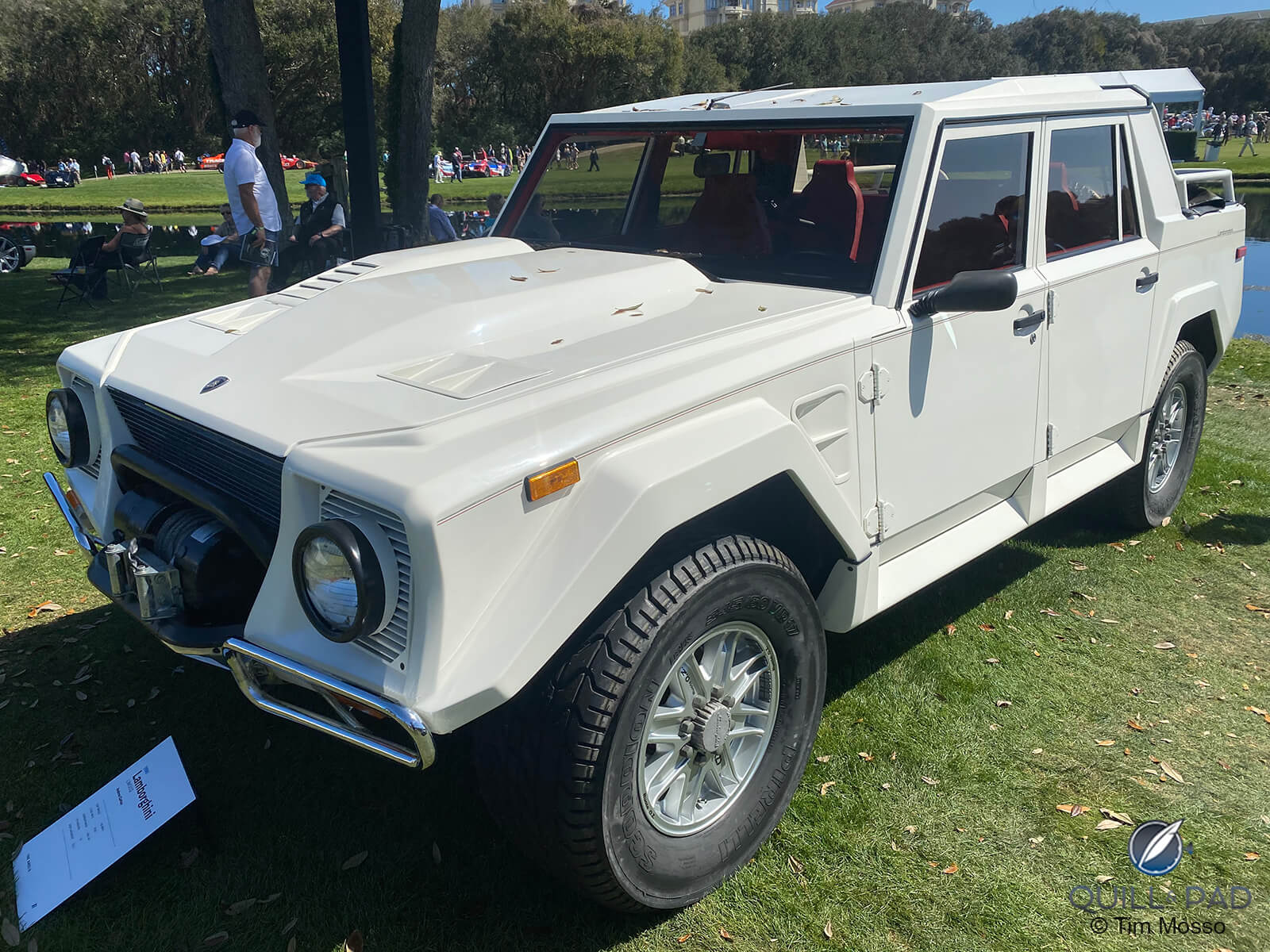
Lamborghini LM002
Lamborghini’s LM002 – possibly the most extreme road legal vehicle of the 1980s – also made an appearance. Descended from a failed military prototype, the LM002 combined a Countach V12 with Hummer-like road presence and massive off-road chops.
Loaded with luxury, 449 horsepower, and gasoline capacity of up to 290 liters, the LM002 created the performance SUV genre decades before any other brand even considered such a thing.
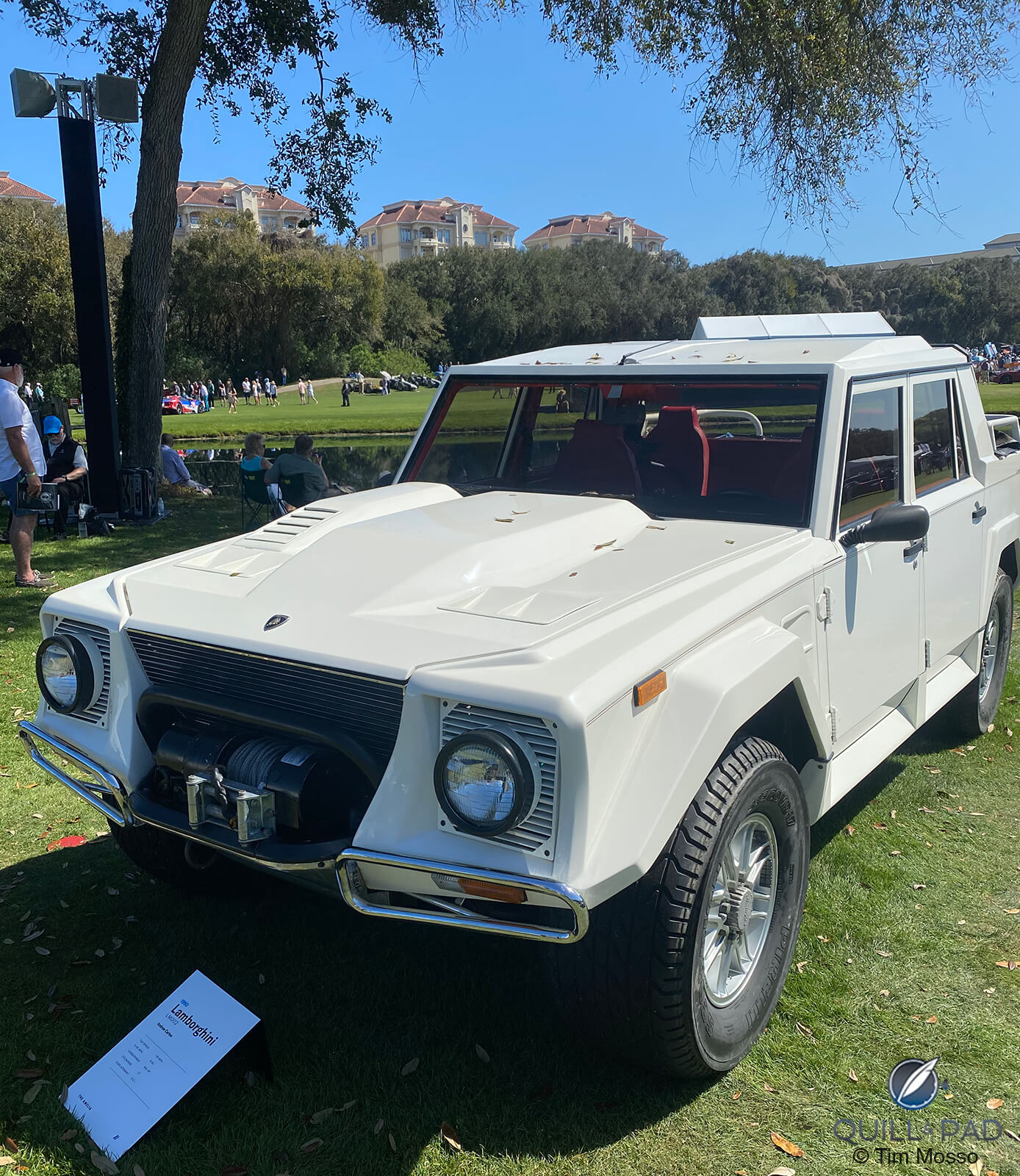
Lamborghini LM002
Despite a mass of 2,666 kilograms, the LM was capable of running with period Detroit muscle cars and boasted a top speed of over 125mph. Tires were model-specific Pirelli Scorpion steamrollers 345mm wide.
While the truck never found a mainstream audience – even by Lambo standards – it was well loved among wealthy Middle Eastern residents with limitless gas and limited roads.
Jaguar’s XJ220 and the Mercedes-Benz SLR McLaren provided a case study in cars more loved today than they were in their era. The Jaguar supercar’s image suffered in its day due to its dissimilarity with the long-forgotten auto show prototype of the model.
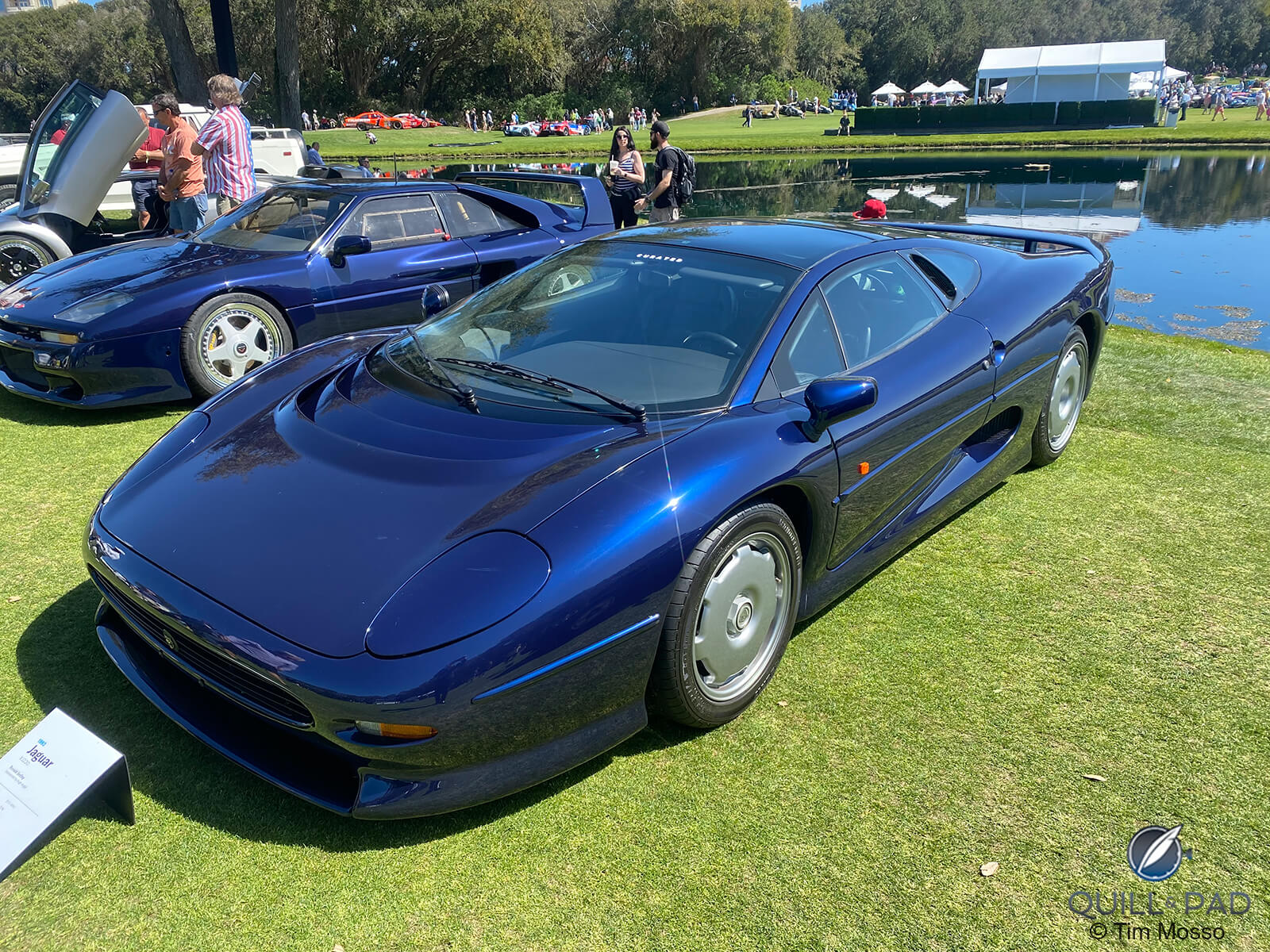
Jaguar XJ220
While the show car boasted features such as a Jaguar V12 and all-wheel-drive, the production model included a Ford-based twin turbo race-bred V6 and rear-wheel drive.
In hindsight, the Tom Walkinshaw Racing-built 220 was a ballistic missile clocked at a record-setting 217mph and only missing a Le Mans class win on a technicality. It was a tremendous performance car cloaked in all-time-great sheet metal.
Today, the rarity – only 282 were made – and drop-dead looks make the 220 highly collectible.

Mercedes-Benz SLR McLaren
In the annals of automotive engineering, few cars suffered as troubled a gestation as the 2003-2010 Mercedes-Benz SLR McLaren. Although the union of MB and McLaren was a natural extension of their F1 relationship, acrimony over the direction of the road car project emerged immediately.
Disagreements over the character of the car – sports car or grand tourer – led to bad blood between McLaren designer Gordon Murray and Mercedes’ German team. I spoke to a veteran of McLaren from this period and was advised that the SLR’s development was the most politicized he had ever experienced.
Styling of the car was by MB and based heavily on the 1999 Vision SLR concept car. However, all engineering and manufacturing but the powertrain was conducted in England by McLaren Automotive.
Alongside race-bred features including a full carbon tub, front-mid-engine layout, and 617 horsepower, the McLaren SLR also included touring an automatic transmission, 1,800kg mass, and full interior luxury appointments. In period, the SLR was perceived as “compromised” rather than “versatile.”

Interior of the Mercedes SLR
Unlike the other 2000s-era “big three” supercars – Ferrari’s Enzo and Porsche’s Carrera GT – the SLR of 2025 is not a million-dollar collectible. $350,000 still buys a well maintained SLR coupe.

Back of the Mercedes-Benz SLR McLaren
That said, the SLR’s accessible performance and ease of operation recently have induced car collectors to take a second look at the model and view it more kindly in retrospect.
A dynamic shape, extreme raked profile, and scissor doors endow the SLR with unmatched curbside appeal. Mercedes-grade luxury accommodations make the SLR a far more enjoyable place to spend time than the spartan confines of an Enzo or Carrera GT.
The concours proper kicked off on March 6 with an exhibition of more than 200 cars in several classes. Typical concours heavy-hitters including Cord, Bugatti, Pierce-Arrow, Rolls Royce, Marmon, and Duesenberg were represented in force. The last of that list also claimed best-in-show courtesy of 1934 Duesenberg Model J Roadster #531.
The rakish black machine boasted immaculate condition but also several unconventional period details such as faired nacelle headlights and a speedster-like cut down windshield. The black beauty was a stunning example of a Pebble Beach-grade restoration and a credit to its prep crew.
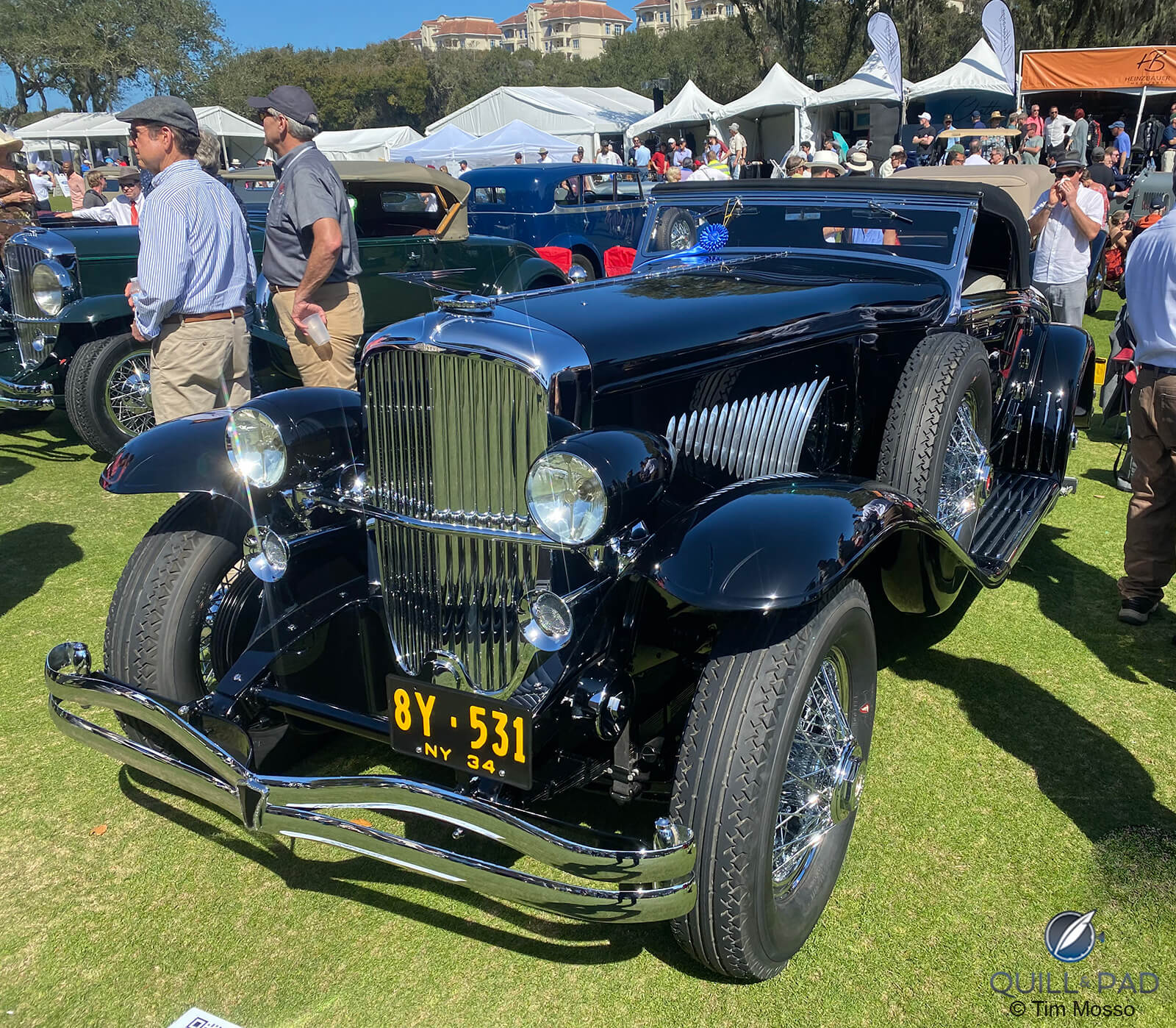
Duesenberg J
The story of Duesenberg’s “J” is intertwined inextricably with its remarkable 6.9-liter straight-eight engine. This mill, which drew directly on Fred Duesenberg’s racing experience, made the Model J the McLaren F1 of its day. In an era when 25-60hp engines remained common, the 265-horsepower “J” was unique.

Standard (non supercharged) Duesenberg motor (green)
Its technical specifications – twin cams, hemi heads, four valves per cylinder – were decades ahead of their time. Standard Model J engines were painted green as seen here.
However, additional power was available upon request. 36 Model Js – the SJs – were equipped with shaft-driven superchargers that increased power to 320hp. Additional tuning brought up to 400hp for drivers willing to pay the price and live with a race car on the road.
It was the world’s most powerful road car. For perspective, consider that the 1951 Chrysler Hemi V8 made 180hp, the 1961 Jaguar E-Type inline six made 265hp, and the 1984 Ferrari Testarossa flat 12 made 390hp.
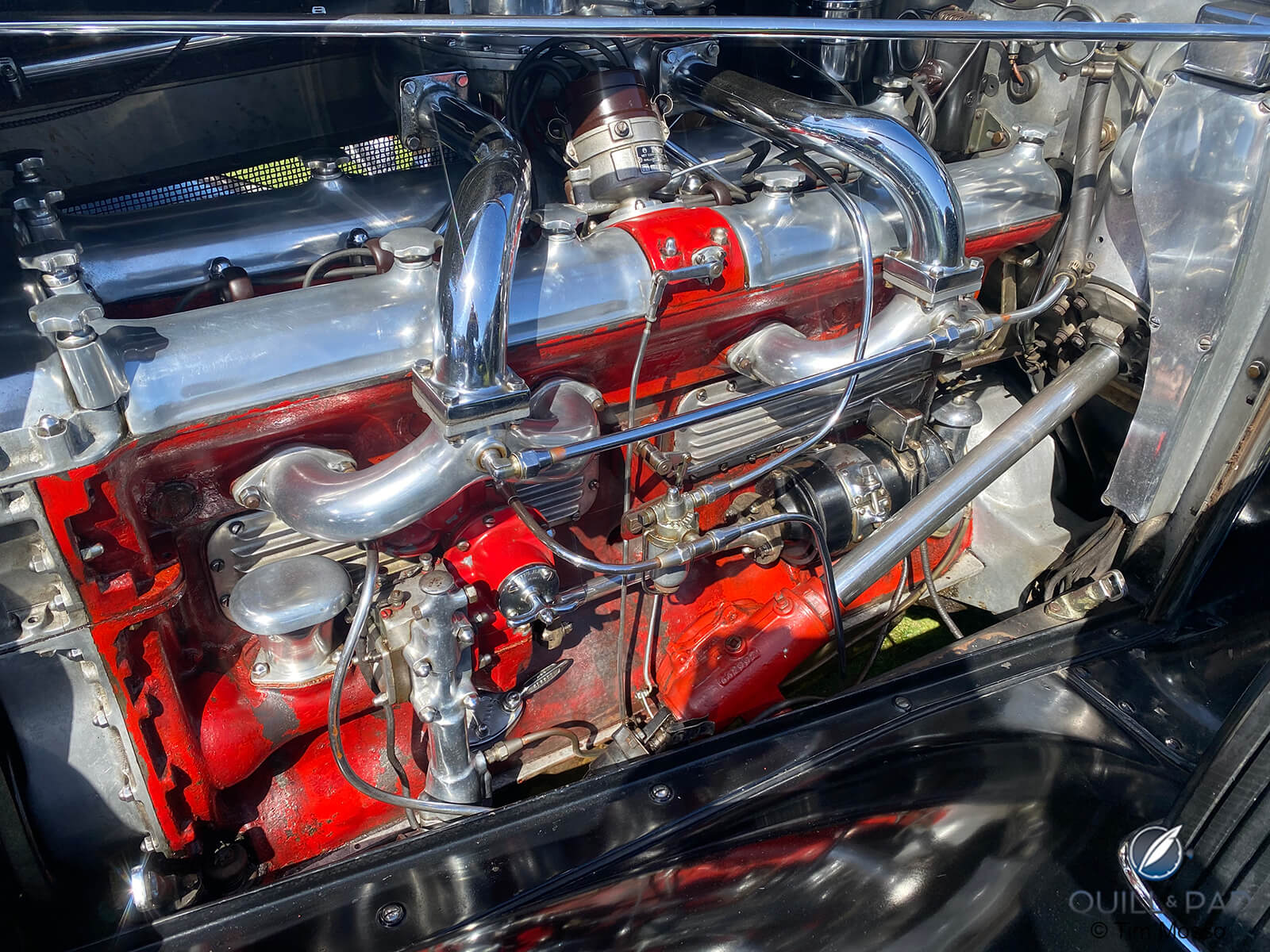
Supercharged (red) Duesenberg J motor
Supercharged Model Js included red-painted engines as seen here; this example features minimal restoration.
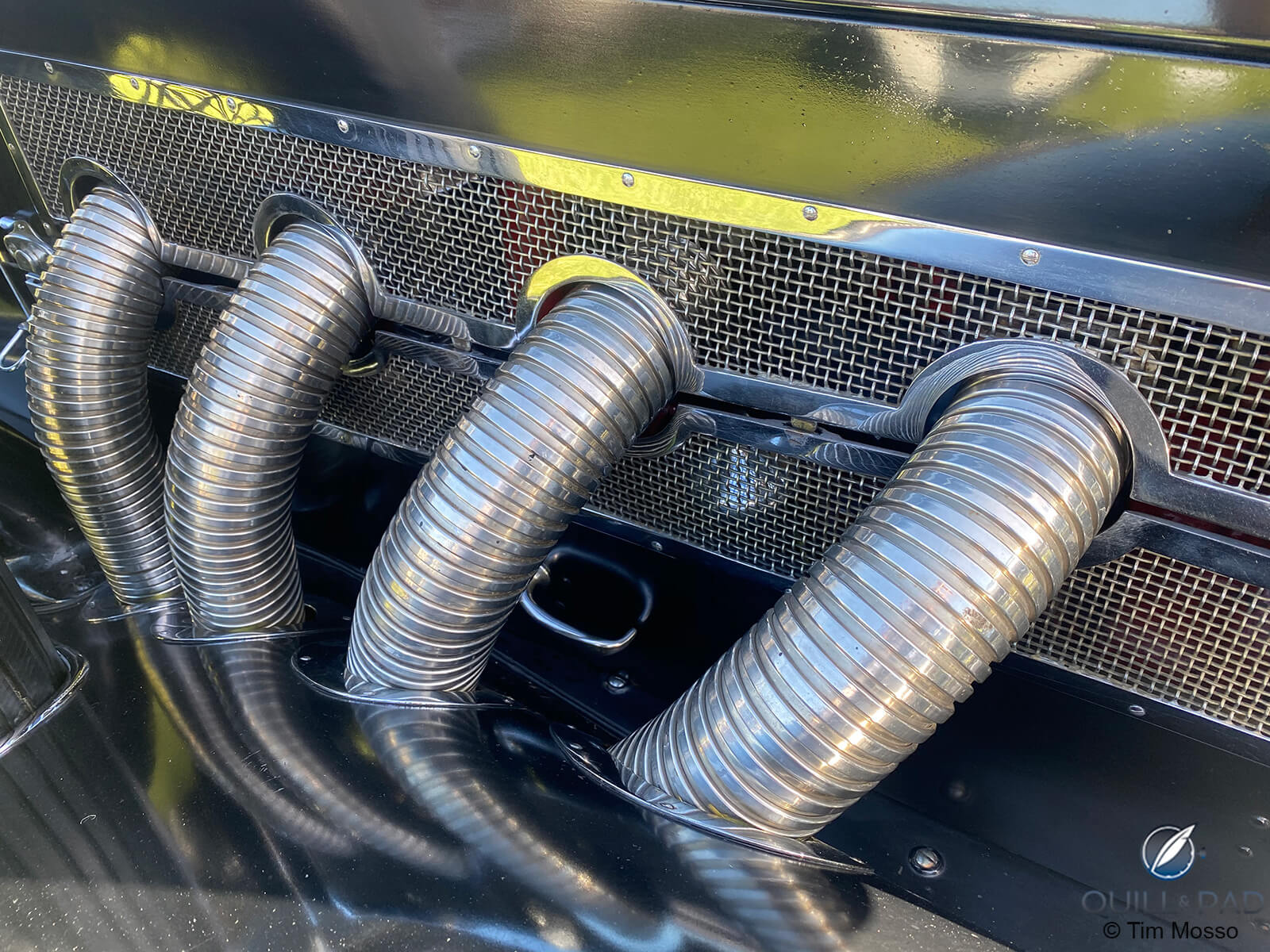
Duesenberg SJ manifold ducts
Due to the presence of the tall cylindrical supercharger on the passenger side of the engine, the exhaust routing of the Duesenberg SJ arcs above the cam covers, outboard to right, and over the blower. The signature element – externally visible manifold ducts – became so fashionable that it was fitted to several standard Model Js by request.

1937 Cord 812 phaeton
Gordon Buehrig’s landmark Cord 812 made the scene courtesy of a gorgeous cream-colored 1937 phaeton. Technically the middle brand in the Auburn-Cord-Duesenberg corporate hierarchy, Cord occasionally encroached on Duesenberg’s glory courtesy of styling triumphs like the L-29 and 810/812.
Although not priced like Duesenbergs, the best of the Cords were capable of matching the senior brand’s curb appeal.

Coffin-like nose of the 1937 Cord 812 phaeton
While technically audacious due to front wheel drive and a preselector gearbox, the 812’s gripping style is the foundation of its legend. The coffin-like nose served to emphasize the driven front wheels, and its angular appeal has endeared it to generations of collectors.
Pop-up headlights were a sensation in their time, and this feature lent the model a futuristic air by the standards of its era. A straight eight engine with 125 horsepower or 170 with supercharging provided excellent period performance.
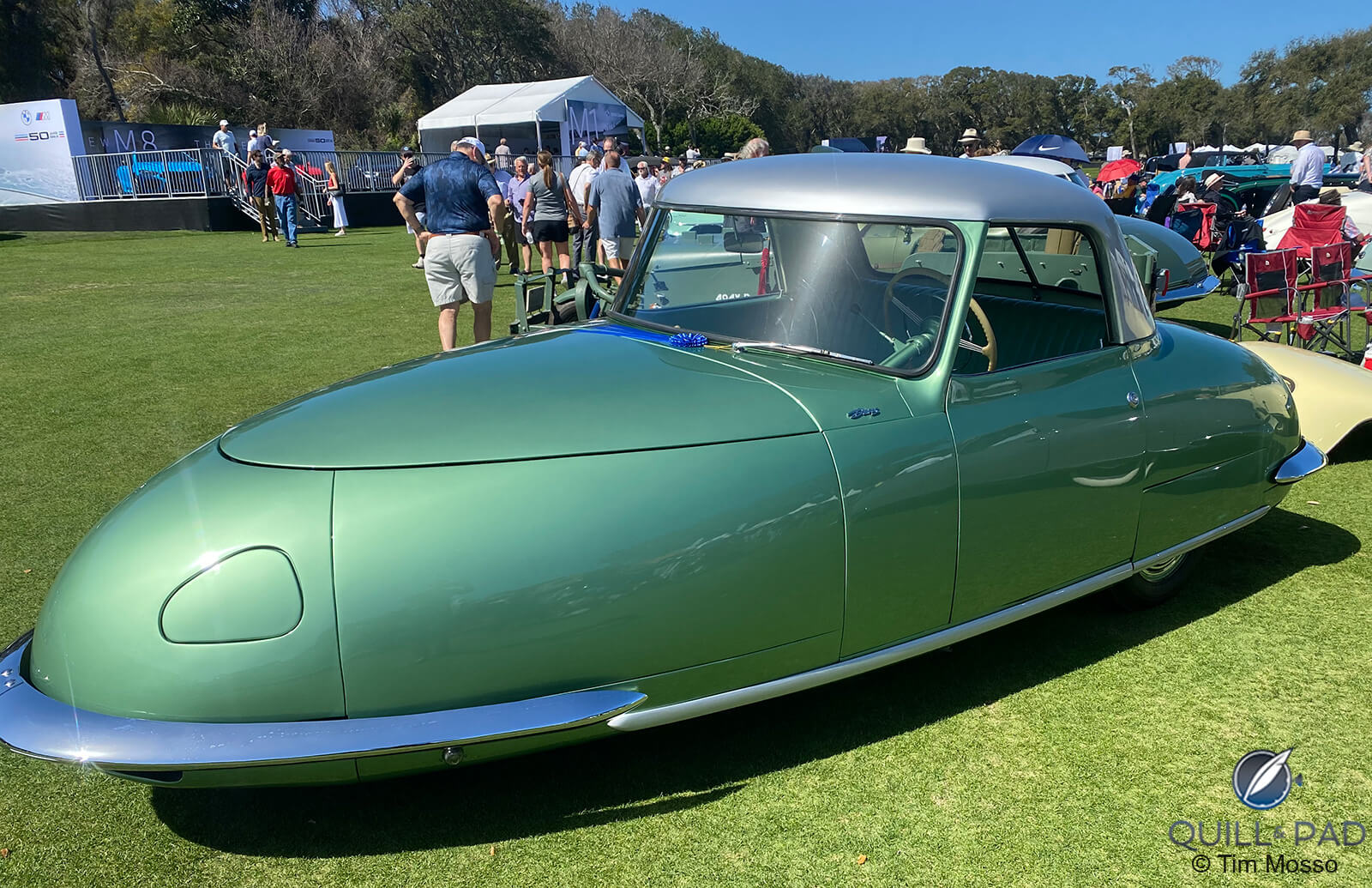
Davis Divan
Say “Davis Divan,” and very few car collectors will catch the reference. Somewhere between a pitchman and a con man, Glen Gordon Davis – he went by “Gary” – promised post-war America a $1,000 family car. His solution was a California-built three-wheel streamliner with a removable top and a single four-passenger bench seat.
Due to aluminum body construction, a small four-cylinder engine, and aerodynamic contours, the 1947 Divan was billed as both economical and advanced. Due to the impossibility of changing the single front wheel conventionally, all three corners featured built-in jacks.
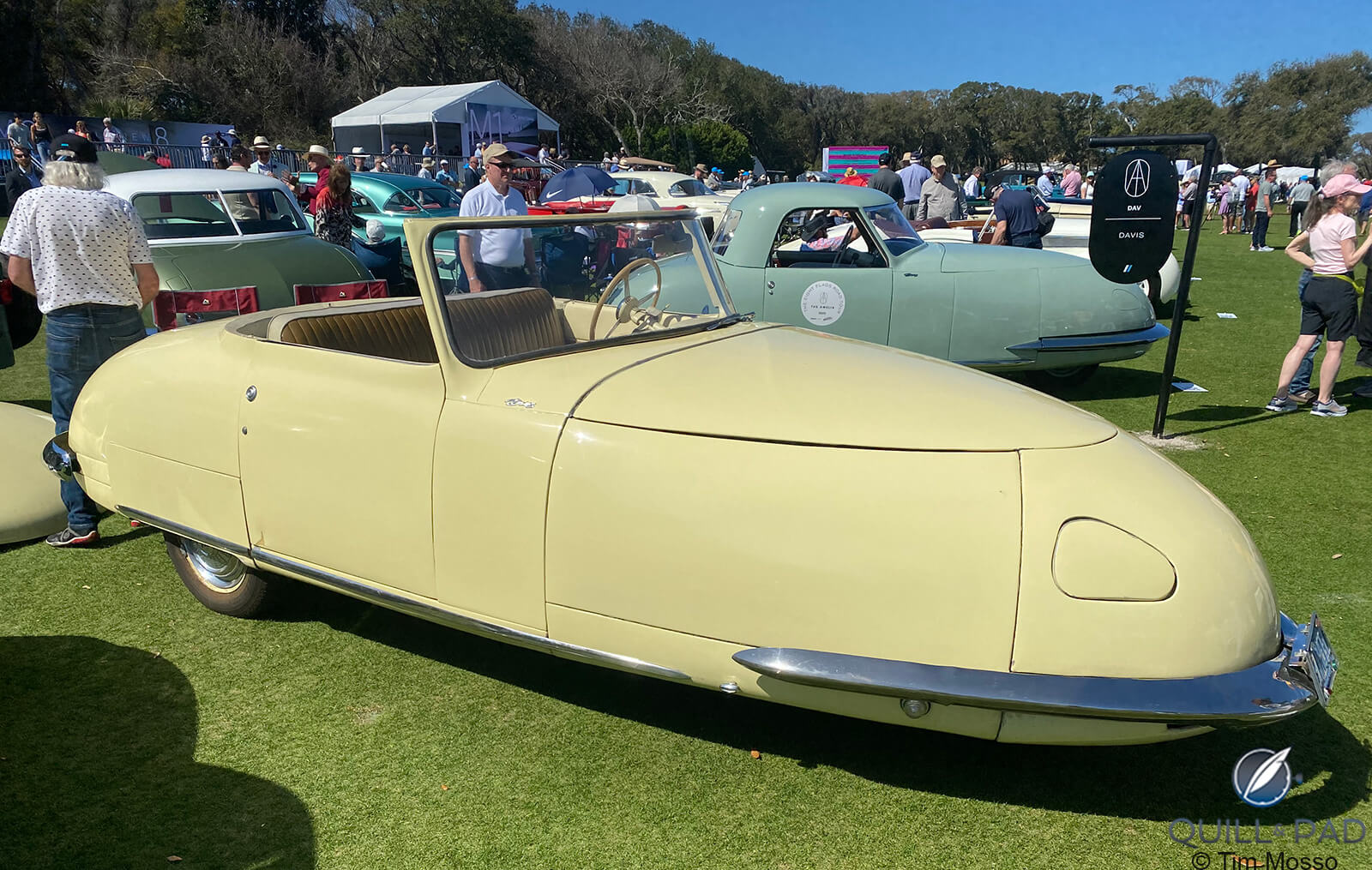
Streamlined Divan
Gary went overboard with both the promises he made and the money he spent. Like John DeLorean a generation later, it wasn’t clear where the business ended and the monkey business started. After the company’s failure, Gary Davis spent some time incarcerated, but he should have been pleased with his legacy.
Of the 13 Divans built, 12 survive, and an incredible six of the twelve made it to Amelia Island 2022 as a featured marque.
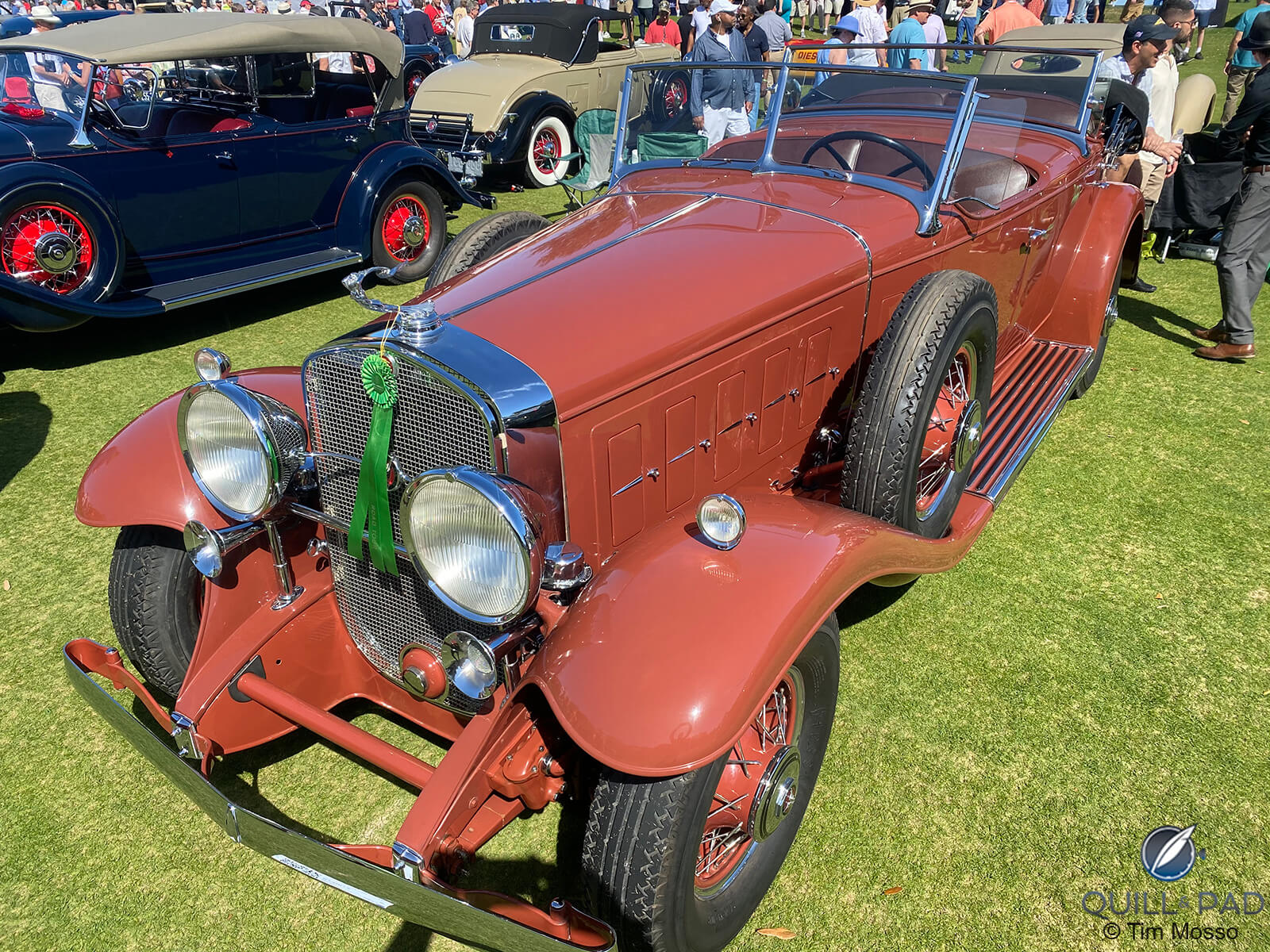
1930 Cadillac V16
There is no luxury car more iconic of America than a Cadillac. While memory of the brand’s low ebb from the 1970s to 1990s fades with each competitive current product, the firm’s distant history is worth recalling. In 1930, Cadillac’s V16 declared the Detroit brand’s intent to compete on equal footing with the Bugattis, Duesenbergs, Rolls-Royces, and Marmons of the world.
Designed by Owen Nacker, the V16 was an advanced overhead valve narrow-V (45 degree) partially aluminum 7.4-liter tour-de-force. In the interest of freeing its operator from distress, the V16 was designed to favor massive torque and smooth running over all else.
In the era before fully synchronized gearboxes, flexibility to drive from crawling to highway speed in a single gear was the ultimate luxury, and Cadillac’s V16 had it.
For the most part, these were coach-built cars supplied as running chassis by General Motors and bodied by independent carriage works. Customization was expected, and few cars were built identically.
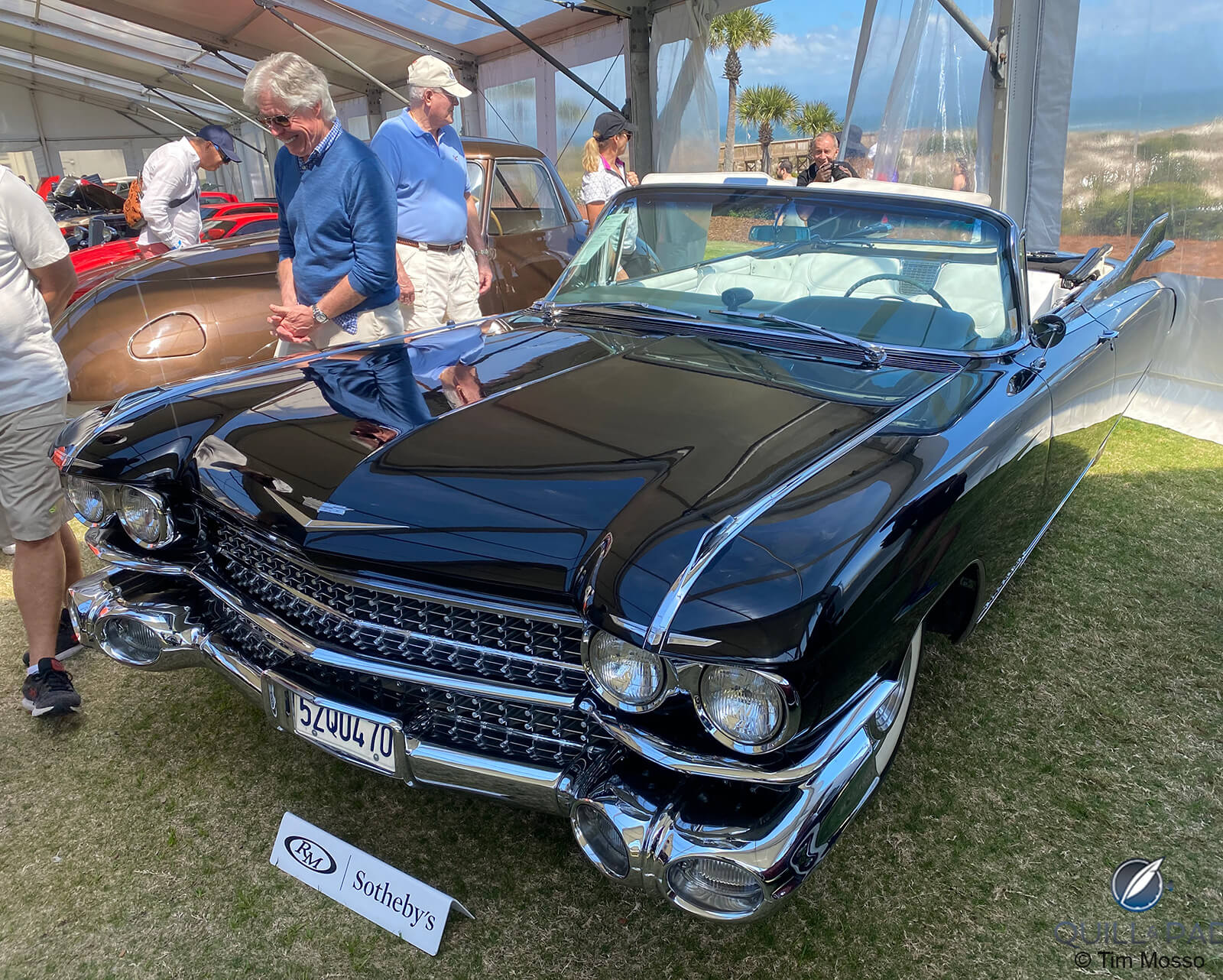
1959 Cadillac
Nearly 30 years after the V16, Cadillac released the collection that came to symbolize both the best and the worst of the company’s post war era, the 1959 Cadillacs. Tail fins – which began as a small flourish on the 1948 Cadillac line – grew to mammoth proportions by 1959.
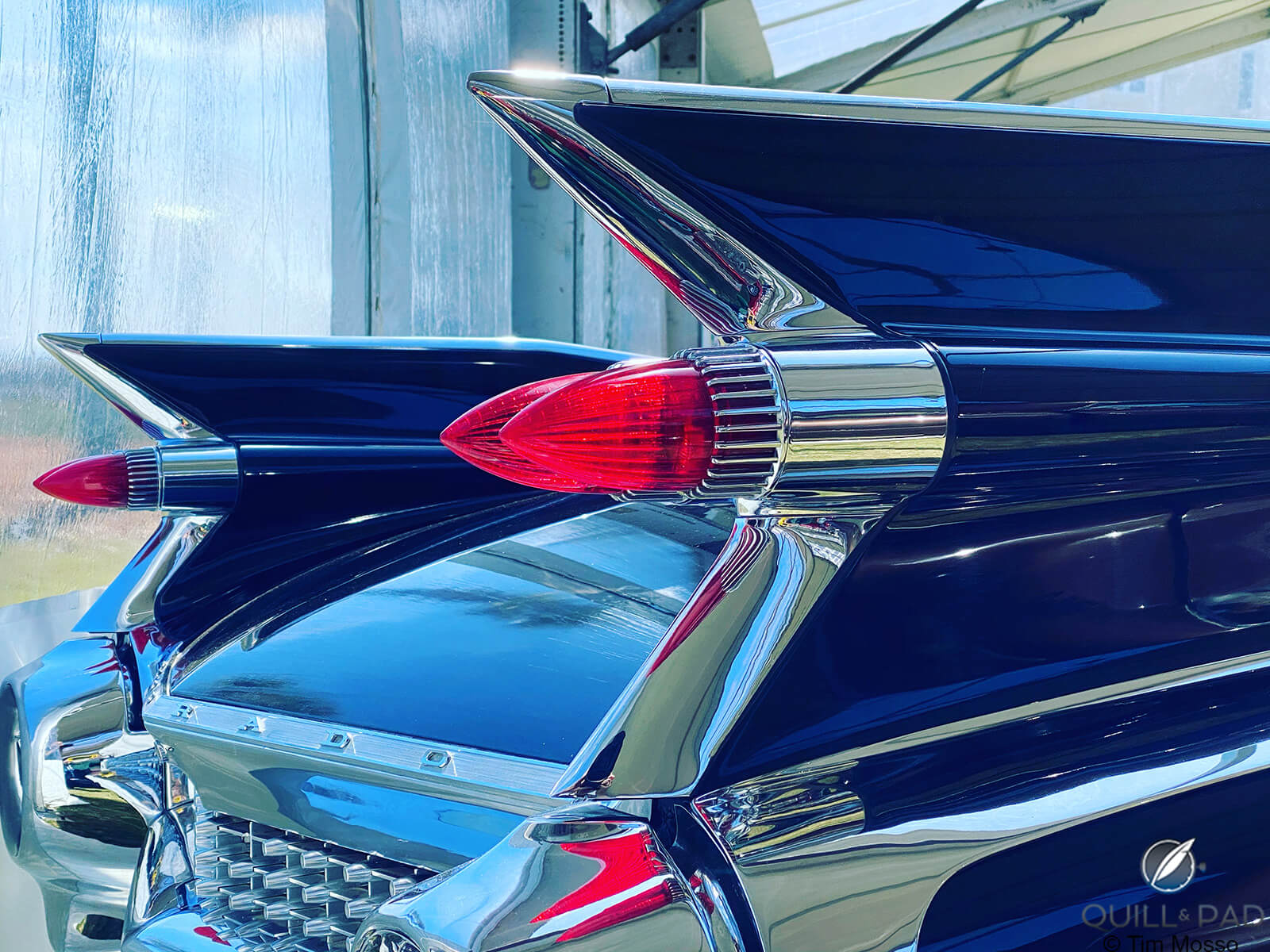
Extreme tail fins of the 1959 Cadillac
The epitome of excess, these tail fins were almost aeronautical in scale and equipped with twin nacelle-style tail lights. While lambasted in their time, these cars have developed a loyal following and many admirers in the modern era.
I can remember a time when people used these as planters for gardens and donor bodies for art projects. The one at Amelia’s RM Sotheby’s 2022 auction hammered for $250,000. How times change.
The second installment of this two-part gallery will focus on vintage Ferrari supercars, Le Mans race cars, Japanese classic cars in modern concours events, coach-built luxury, and the time Sears sold a horseless carriage by mail order catalog.
* Tim Mosso is the media director and watch specialist at The 1916 Company. You can check out their very comprehensive YouTube channel at www.youtube.com/@the1916company.
You might also enjoy:
Leave a Reply
Want to join the discussion?Feel free to contribute!



I’ll just step in to correct myself on one point – Cord’s Lycoming-built 8-cylinder for the 810 and 812 was V-8 format, not a straight 8!
Thanks for sharing. Favourable climate in parts of the US makes keeping and showing classics far easier than over here in the UK.
I’ think I spotted a personal favourite in the background of the SLR, can you confirm it’s a Spyker? Interior shot of that would’ve blown the socks off the SLR given the metal switches, quilted leather and exposed gear linkage for the manual box.
All the best,
Ed